The cleanest way to do this without having to drop down to Core Graphics or GL is to create a layer containing the angle gradient that you want the ring filled with, mask it with a CAShapeLayer containing your circular path (with the appropriate line width and cap settings), then, as you’re currently doing, use the shape layer’s strokeEnd property to set the “fill” percentage. Note that there isn’t a built-in way to create an angle gradient—you can use one of the suggestions in this answer for that.
edit: Also, you’ll need a pair of semicircular “cap” images, one at each end of the ring—as the fill percentage gets close to 100%, the region at the top will reveal the discontinuity between the start and end color. In your example image above, you’d need a red semicircle oriented like this ( at the start, and a pink one oriented like this ) with a translation/rotation transform tracking the end.
additional edit: Also also, since the end-cap semicircle will be moving along the gradient, you’ll need it to change color, interpolating from the start color to the end color as the fill amount goes from 0% to 100%. Best way to do that is with a shape layer with a semicircular path, since you can set the fillColor of that without having to redraw image contents.
